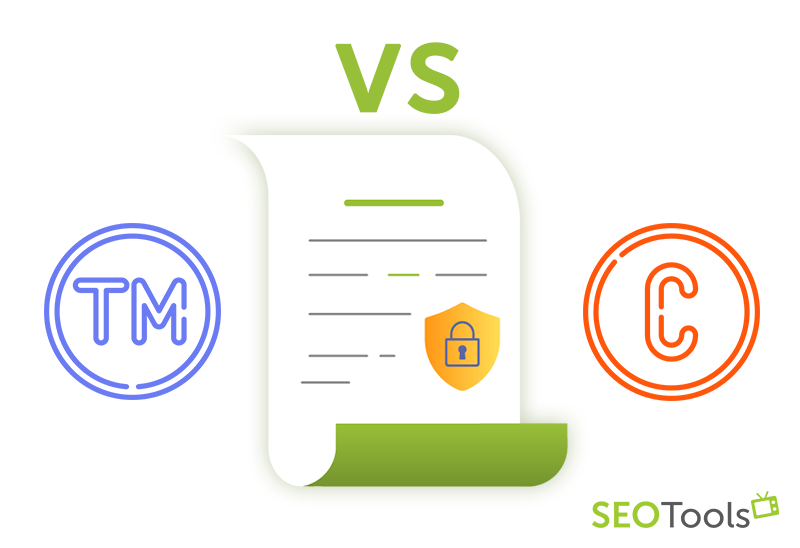Should I Trademark Or Copyright My Logo? (All Advantages/Disadvantages 2025)
No law forces you to trademark or copyright your logo.
So, you don’t need to worry about legal issues.
That’s it. Can we stop here? No way.
It’s not simple as it sounds because of your competitors.
Let’s dive in.
We live in a world with high competition when others do anything to steal your sales, revenue, or damage your reputation.

Here are a few scenarios that might happen if you don’t protect your logo.
First, when you invest resources to promote your products that are labeled with the logo.
Customers memorize products by these labels.
If your competitors see that it’s not protected, they might launch their products with your labeling.
Customers buy other products because of your labels.
Even worse, products might be low-quality that diminishes customers’ satisfaction.
Second, others might trademark your successful logo when you spend so much time promoting and creating brand awareness.
Here are a few possible ways.
You can’t prove that logo was yours.
The court might issue fines for your logo because “a real stealer” lost money.
I don’t want to assume how much you will pay in that case.
It’s up to judges who can measure the possible damages of your competitors.
One of my friends escaped paying huge fines by moving to Russia.
Sorry but I don’t want to unhide his real name.
Let’s call him Sergey.
Here is his story.
Sergey once decided to sell rings from The Lord of the Rings movie on eBay.
The business system was straightforward.
He ordered productions of these rings with labels in Chinese manufactures.
The expenses for a silver ring were $3 that he sold for $99 on eBay.
He sold a thousand rings for a few days after releasing a new movie.
The profit was $96,000!
When he ordered 5,000 more rings, eBay blocked his account and sent the letter of violent private properties.
Then trademark holder sent him a similar message asking to pay damages.
He apologized and moved to Russia to escape prosecution.
I don’t know what has happened next with Sergey because we lost contact.
It’s not my way of handling business like this.
I don’t think so that you want to pay fines or move to other countries.
Let’s switch to another scenario.
You can prove in court that the logo was created before trademarking.
Then be ready to pay for lawyers, fees and waste time proving legal issues instead of developing and innovating your products.
Ok, let’s imagine you’ve done a great job to prove it.
But competitors who trademarked your logo can continue using it.
It gets back to the first issue that we described before.
The main question is, do you need these issues, lawyers, courts, worries?
I don’t think so.
Because it doesn’t cost a lot to trademark your logo.
Big brands always protect anything related to their businesses.
You can’t use the logos of Amazon, YouTube, Adidas, or Tesla without their permission.
Trademarking is essential for long-playing projects that are willing to grow and extend the customers’ base.
I can do the whole job for you.
Forget about submitting requests, fill the endless forms, and figuring out that everything is fine.
My job is to take away the pain and protect your logo and brand.

Logo Trademark VS Copyright.
Before choosing copyright or trademark, let’s describe what these definitions mean.
Copyrighting protects artistic arts: books, paintings, photography, songs, choreography, movies, etc.
In that case, the logo is a part of the art or original works of authorship.
Copyrighting rights appeal after creation, but registration helps to protect when someone is trying to steal it.
It shares the possibilities to control how others use, publish or distribute your intellectual property or sue even sue them in federal court.
Here is an exception.
Your logo should consist of creativity to be considered copyrightable.
So, simple logos aren’t considered copyrightable.
There are three essential copywriting benefits:
- Сopyrighting adds to a public record and proves that you’re copyright ownership.
- You can get back your expenses from someone who used your properties without asking: attorney fees, damages, etc.
- The International Trade Commission adds your properties to their database.

How To Trademark Your Logo?
Let’s start with a definition.
Trademarking is a registration of a logo, design, slogan that consists of a phrase, word, symbol, and anything else related to a specific brand.
It helps to distinguish sellers or manufactures that are working in one niche.
A trademark provides exclusive rights connecting the products with your properties.
Here are a few exceptions.
A trademark doesn’t cover the logo’s colors and design.
It only limits similarities between your mark and others with the copyright infringement, not a trademark.
Let’s dive into the benefits of trademark registration:
– Having proof of trademark ownership and symbol (®).
– Protection against similar marks nationally and imported goods.
– Asking for damages in court if someone violates your rights.
672,681 trademark applications were approved in the US in 2019.
It’s a lot!
Wherein there are 30.7 million small businesses in the US or 99.9% of all US businesses.
Many businesses still ignore trademarking.
People are not willing to pay $1 for prevention but ready to give a thousand times more for treatment.
Check out a few examples below of how popular brands got trademark infringement cases.
- A South Korean fried chicken restaurant Louis Vuiton Dak lost a trademark battle with Louis Vuitton.
The name and logo were similar to the famous designer brand.
I wanna highlight that was similar, not copied.
As a result, the fine was 14.5 million USD dollars.
- Blue Sphere settled a lawsuit against Taylor Swift because she started to sell clothes with the trademark “Lucky 13”.
Taylor insisted that 13 is only a lucky number and nothing else.
The results of the lawsuit were hidden and not appeared publicly but Swift changed this phrase.
- 3M vs. 3N
I like this example because 50% of the letters in a logo are different, but not for the court and customers.
The American company 3M spent a lot on creating brand awareness and innovation.
Many customers and businesses bought quality products from 3M.
A Chinese company Changzhou Huawei Advanced Material Co Ltd, released products in their 3N trademark.
3M sued 3N in the Chinese court and won the case even having these differences.
Conclusion
It’s up to your to play with fire or not.
If you lead a small business and feel sure that nobody can find you, play this game.
I prefer sleeping well and pay significantly less for prevention.
If you’re in the same boat as I am, then reach out to me and share any issues with my team.
My goal is to protect your logo, brand name, and other properties to help you grow.


